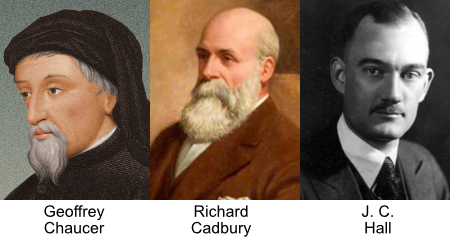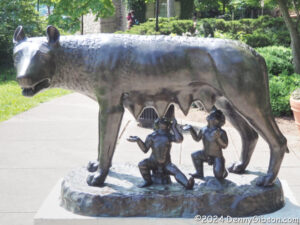Two weeks ago, I had nothing planned for this blog and was preparing to dust off an old Groundhog Day or Imbolc post when I spotted a notice for a motorcycle show on Groundhog Day Eve. That led to Beer and Bikes, and the Imbolc and Groundhog posts were left on the shelf for another day. When I found myself in the same situation around Valentine’s Day, I got to wondering if Valentine’s Day had the same relationship with older, often pagan, holidays that days like Easter, Christmas, and Candlemas have. After all, its full name is Saint Valentine’s Day.
For me, the answer is probably. Almost all online articles about the history of Valentine’s Day mention the Roman feast of Lupercalia but most stop short of firmly linking the two with phrases like “many believe” there is a connection or that a connection “has been suggested”. Count me among the many who believe.
Lupercalia comes from the Latin word lupus which means wolf. Theories about its association with the feast include a deity that protected herds from wolves and the wolf (pictured above) that kept Romulus and Remus alive so they could get Rome started. Some descriptions of Lupercalia imply it was a one-day event held on February 15. Others say it was a three-day affair that filled the 13th, 14th, and 15th.
Regardless of how long they say it lasted, everybody describes it as a quite raucous celebration. Participants were drunk and naked. Men sacrificed goats and dogs then whipped women with strips of the animal’s skins to increase fertility. At some point — which I assume was after the slaughter, skinning, and whipping — men and women were paired up by lot for the duration of the festival. Trysting with a possibly blood-splattered random lady after trying to make her more fertile doesn’t seem all that wise or even fun, but times were different.
That the Christian Church would want to replace that with something more sedate seems natural, but the origins of Valentine’s Day are not well documented. There seems to be no shortage of saints named Valentine. Two are connected to February 14 by virtue of reportedly being executed on that date in different years. The Eastern Orthodox Church celebrates a different Saint Valentine on July 6 and yet another on July 30. One of those guys executed on that special day in February was sentenced to die because he persisted in marrying Christian soldiers when the Roman emperor forbade it. That could be what initially got the day associated with love and romance, but I’m betting it was the Lupercalia lotteries.

Associating romance with the day really picked up steam after Chaucer published “The Parlement of Foules” in 1375, and a few Valentine cards were sent between lovers during the next couple of centuries. Then Cadbury came up with heart-shaped boxes of candy for the day in 1868, and Hallmark started printing Valentine’s Day Cards in 1913. It is predicted that Americans will spend $2.5 billion on candy this year and $1.4 billion on cards. Throw in jewelry, flowers, and romantic dinners, and the total bill is expected to reach $27.5 billion. I’m sure goats and dogs are also celebrating, but they’re doing it very quietly.
The opening photo is of the Capitoline Wolf in Cincinnati’s Eden Park, taken June 1, 2014. The statue has been admired, denounced, stolen, and replaced. Read about it here.

